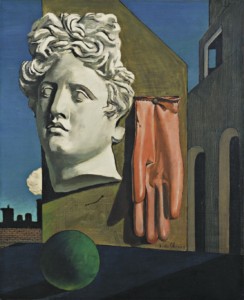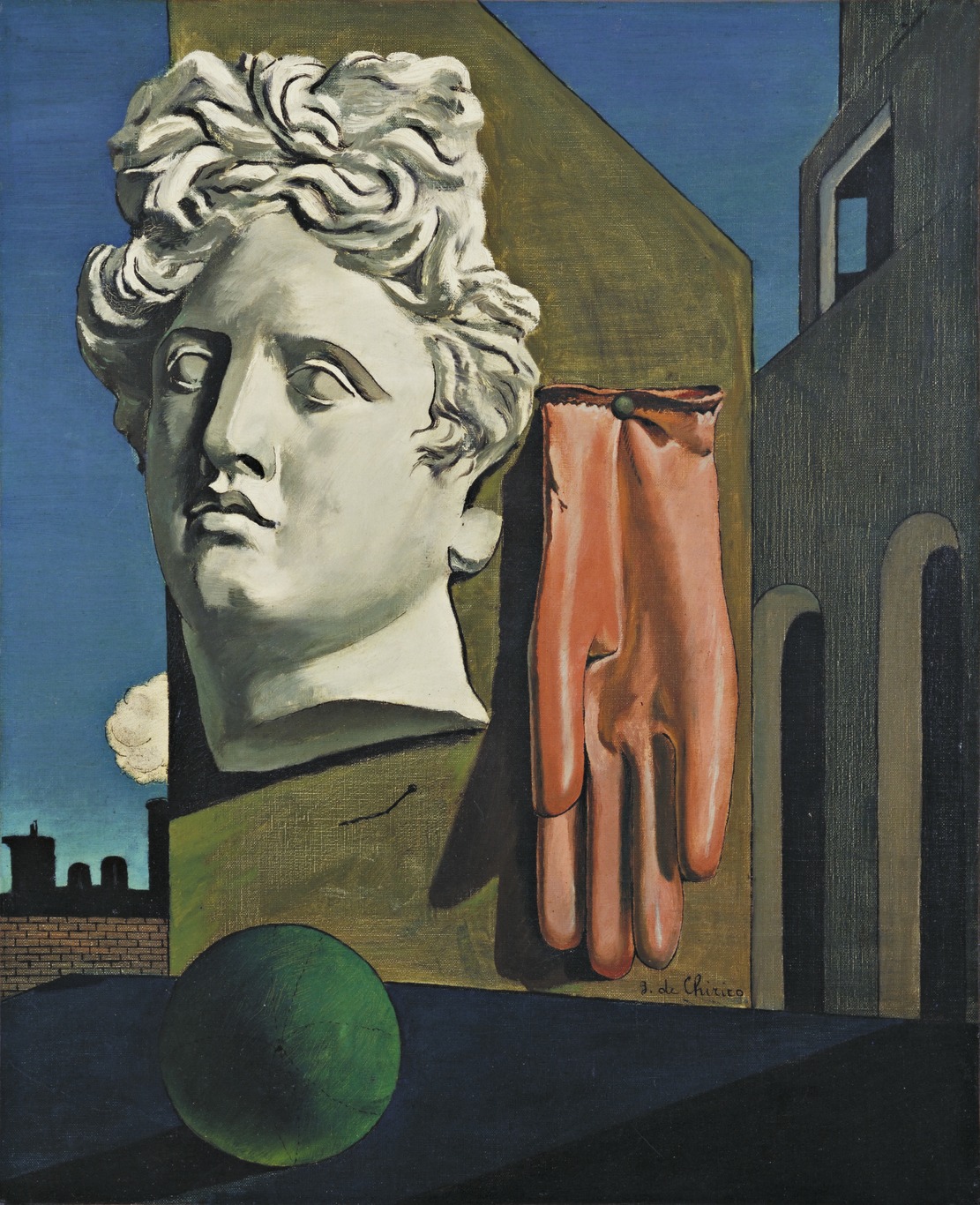«آواز عشق» اثر جورجیو دکریکو، نقاش ایتالیایی دومین نقاشیایست که میخواهم در موردش بنویسم و از وقتی انتخابش کردم میدانستم نوشتن در موردش سخت است. نگاهی گذرا به این اثر کافیست که بفهمیم با اثری عجیب و غریب طرفیم. آرایشی ناجور از اشیایی بیربط در یک لامکان بهتمام عیار.

دکریکو از اولین نقاشانیست که ارتباط منطقی بین اشیا را از نقاشی حذف کرد و چقدر هنرمندانه این کار را میکرد. میگویند سردیس آپولو نشانهی احترام دکریکو به تمدن باستان یا نشانهای از خدای آفتاب و شعر، کرهی سبز نشانهی کمال، دستکش نشانی ناقص از عضوی از انسان، قطار اشاره به کودکی نقاش و رواق متروک نشانهی … و هزاران تفسیر دیگر که میشود از این اشیا کرد. با اینکه تفسیر سمبلیستی نقاشیهای دکریکو و نقد زندگینامهای کارهایش به نظر جذاب میآید، به نظر من بیانصافی در حق اثر است و جلوی لذت بردن از آن را میگیرد.
من وقتی این نقاشی را میبینم با خودم فکر میکنم دکریکو چقدر زیبا و هنرمندانه سه شی نامربوط را در کنار هم گذاشته و فضایی مالیخولیایی، غمانگیز و البته اسطورهای بوجود آورده بدون اینکه روایتی در کار باشد. جای ربط دادن این اشیا به مراجع مختلف مثل یونان باستان یا ایدهی کمال یا پوچی بعد از جنگ جهانی اول، دوست دارم تصور کنم بودن در چنین فضایی چه حالت «متافیزیکی» لذت بخشی دارد. مخصوصن که این اشیا بالاتر از افق دید من هستند و برای همین غولپیکر بهنظر میآیند. دوست دارم تصور کنم دم غروب است و در خیابانی آسفالت ایستادهام؛ روبروی سه شی بیاهمیت که در زندگی روزمرهام میبینم با مقیاسی غیرمنتظره: گویی غول پیکر که پشتش صفحهی سبز عظیمالجثهایست با سردیسی گچی و دستکشی لاستیکی و قطاری که در دوردست میگذرد و سوت میکشد. و تصور کنم که این اشیای بیاهمیت روزانه چقدر میتوانند شاعرانه، غمانگیز و اسطورهای باشند. و وقتی روی از نقاشی برگرداندم، به اشیای اطرافم با این دید نگاه کنم: یک لپتاپ سیاه قدیمی، یک عکس سه در چهار از جوانی پدرم و یک لیوان آب؛ به آنها حالتی اسطورهای و شاعرانه بدهم و یاد بگیرم از نگاه کردن بهشان لذت ببرم.
“The Song of Love” is the second piece on my list by Giorgio de Chirico, an Italian painter. Since the moment I chose this painting, I knew how hard it could be to write about it. A glance is enough to understand the eerie and strange theme of the painting. An incongruous juxtaposition of unrelated objects in a no man’s land.
De Chirico is one of the first artists to strip painting of the logical relation of objects, and he did it well. Textbooks say the plaster head of Apollo is the symbol of his respect for ancient Greece, or the Sun or poetry, and the green sphere is the symbol of perfection, and the red glove implies human presence as a mold of a hand and the train is a reference to De Chirico’s childhood, and hundreds of other interpretations that one could give. While the idea of analyzing the painting with a symbolic approach and in a historical context can be enticing, I deem it unfair to the painting because it deprives us of fully enjoying it.
When I’m looking at this painting, I think to myself, how De Chirico has beautifully juxtaposed these unrelated objects together in a melancholy and epical space without any narratives whatsoever. Instead of interpreting them and relating them to ancient Greece or the god Apollo or the idea of perfection or the absurdity after World War 1, I like to imagine how it feels like to experience this metaphysical sensation, especially that they are above my horizon which makes them look gigantic. I like to see myself being there in a street at sunset before three ordinary everyday-life objects: a giant sphere in front of a huge board with a plaster head and a rubber glove, and a train running far away. And I suddenly realize how poetic and epical these ordinary objects can be. Then when I look away, I see my surrounding objects with the same idea: An old black laptop, a picture of my Dad when he was young and a glass of water, above the skyline with a poetic and epical sense.
